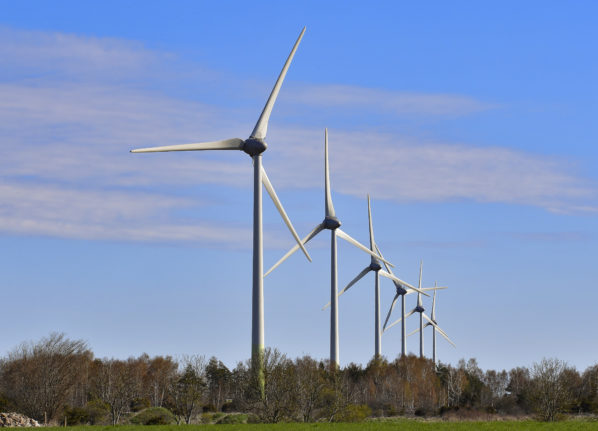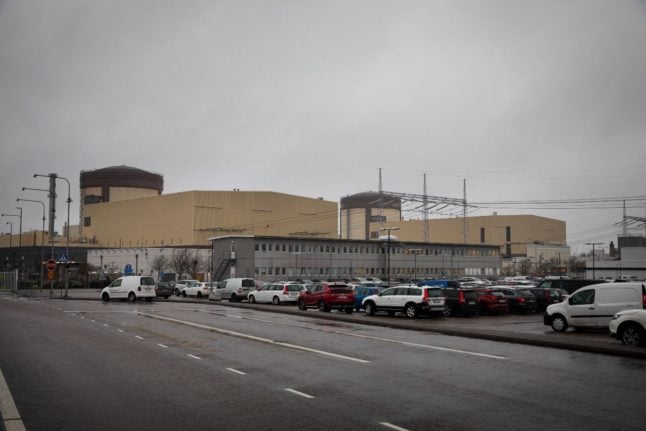Social Democrats:
The ruling Social Democrats list a number of policy points on their website to help Sweden’s consumers lower their energy bills.
- Introduce high-cost protection against high energy bills for households and businesses.
- Expand all types of electricity production by providing financial support to municipalities building offshore wind farms, expanding water and solar power production and investigating future possibilities for all kinds of energy production, including nuclear.
- Cut red-tape hindering production of more electricity and expand the national grid, while making sure that the costs of doing so are not passed on to users. Re-evaluate energy price zones and use energy profits to reduce energy costs for consumers.
- Encourage and simplify energy efficiency projects for Swedish households, both to benefit society and individual household’s finances.
Moderates
The conservative Moderate Party’s election campaign has had a focus on energy prices and, particularly, nuclear energy. Here’s a closer look at its proposals.
- Abolish tax on cogeneration (kraftvärme) – a more efficient power system where heat and electricity are generated at the same time – to encourage investment and make cogeneration plants more economically viable and more attractive for power companies to run.
- Encourage households to cut energy usage by increasing the ‘green subsidy’: a subsidy for investing in energy-efficient technology designed to lower energy use.
- Introduce a temporary high-cost protection for winter 2022/23, which would consist of the government subsidising “a majority of the excess costs” if “the monthly price exceeds a certain level”, which would be determined by the market situation each month.
In addition to this, the Moderates want to:
- change energy policy to make a 100 percent fossil-free electricity system possible by 2040
- invest more in research and development of small modular reactors
- remove current bans on having more than ten nuclear reactors in Sweden at once
Sweden Democrats
The populist Sweden Democrats’ energy policy proposals are as follows:
- permanent tax cut on electricity
- build new nuclear power plants in Sweden and develop a plan for building small modular reactors
- build a Swedish research reactor to research fourth generation nuclear power
- increase tax subsidies for transport for those who need to drive to work
- protect the municipal veto when establishing wind power
- strengthen the competitiveness of district (fjärrvärme) and cogeneration heating
Centre Party
The Centre Party has the following energy policy proposals:
- develop plans to double energy production from climate smart energy sources by 2030, of which 50 TWh must be during the next parliamentary term
- begin discussions for a long-term energy policy for Sweden
- increase export of green energy to Europe
- give households with direktverkande el (electric heating) the possibility of cutting the cost of switching to cheaper district heating or heat pumps by 50 percent
- use profits from the Swedish energy grid to reduce energy prices by increasing cogeneration reserves
Liberals
Here are the Liberal’s energy policy proposals:
- reduce differences in energy prices between north and south of Sweden, so that electricity is available “where and when it is needed to acceptable prices”
- limit energy transition so that more energy is transferred from the north of Sweden to the south, meaning that the south of Sweden are not forced to buy at the same rate as the rest of Europe
- in the short-term, use the power grid more effectively. In the long-term, build more reliable electricity production in the south of Sweden, such as via nuclear power
- lower VAT on electricity to the minimum level of 6 percent throughout 2023 while phasing out electricity tax which would lower energy costs for a large detached house by 20,000 kronor.
Christian Democrats
The Christian Democrats want to introduce the following energy policy if elected:
- cut VAT on electricity for the coming winter and introduce a “shock absorber” on energy tax
- introduce energy policy which “enables the climate transition and ensures energy supply for households and companies at cost-effective prices”
- extend the lifetime of current nuclear reactors and start the process of building new reactors
- a Swedish roadmap for a “new generation of nuclear power”, the so-called fourth generation, which would include the question of a Swedish research reactor
- introduce benefits for reliable forms of energy generation for “their contributions to ensuring energy supply”
Left Party
The Left Party’s energy policy proposals are as follows:
- introduce “Sweden prices”, unlinking the Swedish energy market from the European market. This would mean setting the price on domestic energy first, exporting the excess energy to current European prices, and stabilising domestic prices at 40 öre per kWh.
- set a goal for 100 percent renewable energy production by 2040
- expand on- and offshore wind farms across the country, invest in renewable energy production on the local level and enable public buildings to install solar and wind farms
- no to nuclear power: decommission nuclear power plants as soon as possible and do not build new nuclear power plants
- increase transmission capacity of the Swedish power grid, introduce a top limit for power grid fees and nationalise the power grid
Green Party
Finally, these are the Green Party’s energy policies:
- follow energy agreement from 2016 between Greens, Moderates and Christian Democrats to phase out nuclear power by 2040
- invest in renewable energy rather than nuclear power
- increase energy efficiency, build more cables between northern and southern Sweden and build more offshore wind power in southern Sweden to lower prices in the south
- cover 80 percent of costs to optimise energy usage in apartment buildings and houses, such as by installing smarter technology, investing in insulation and more energy-effective heat pumps, to reduce energy costs for households by 25 percent



 Please whitelist us to continue reading.
Please whitelist us to continue reading.
Member comments